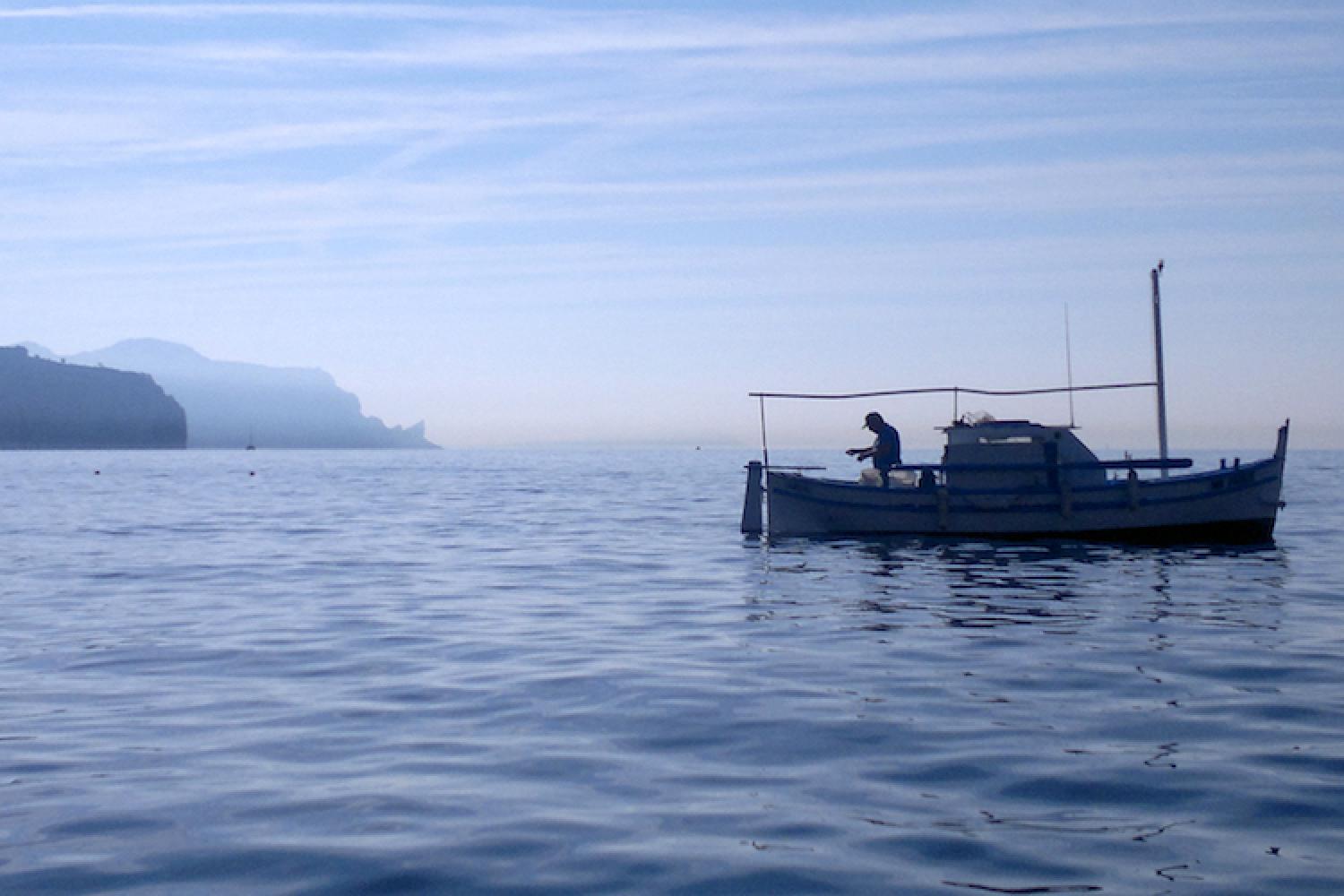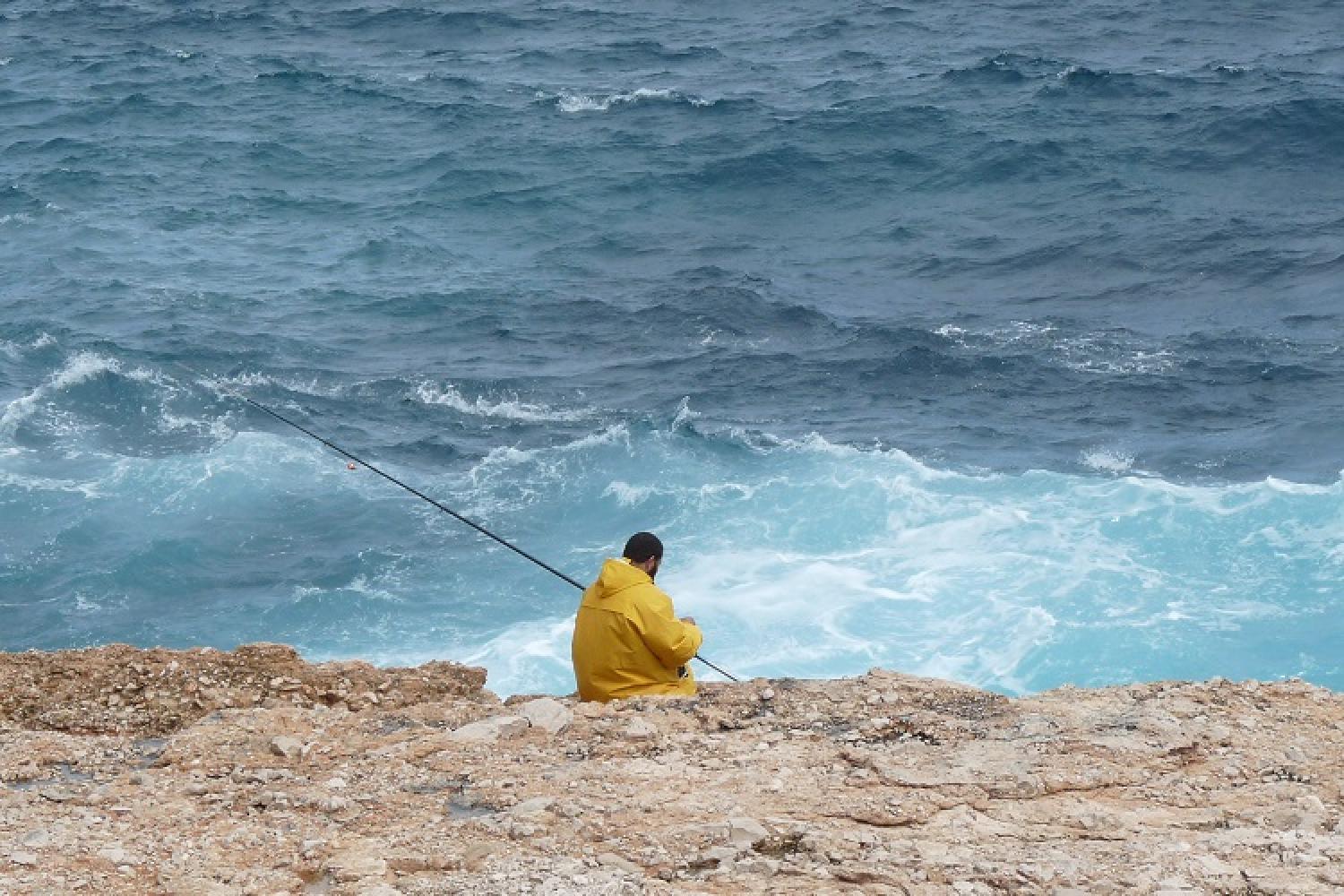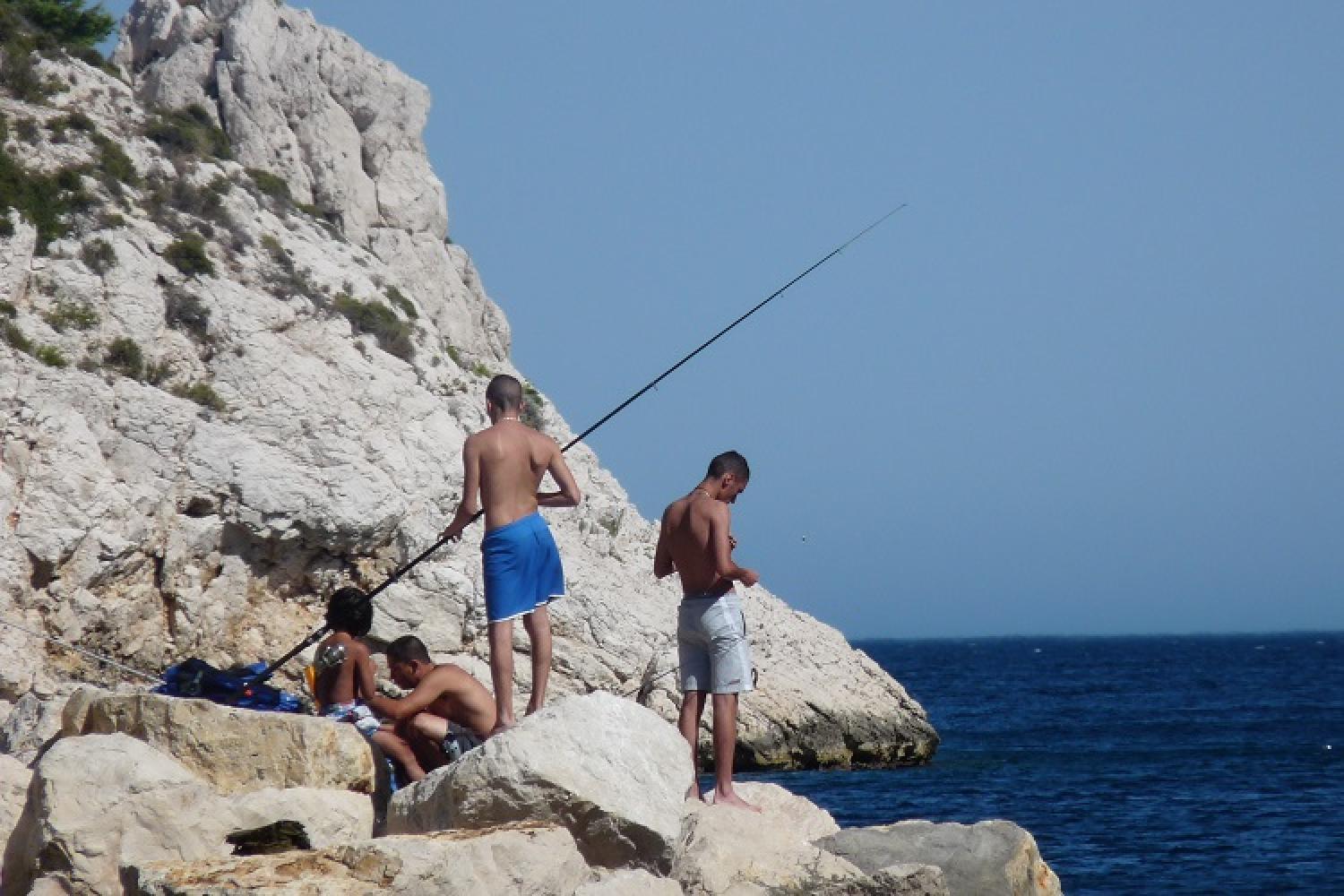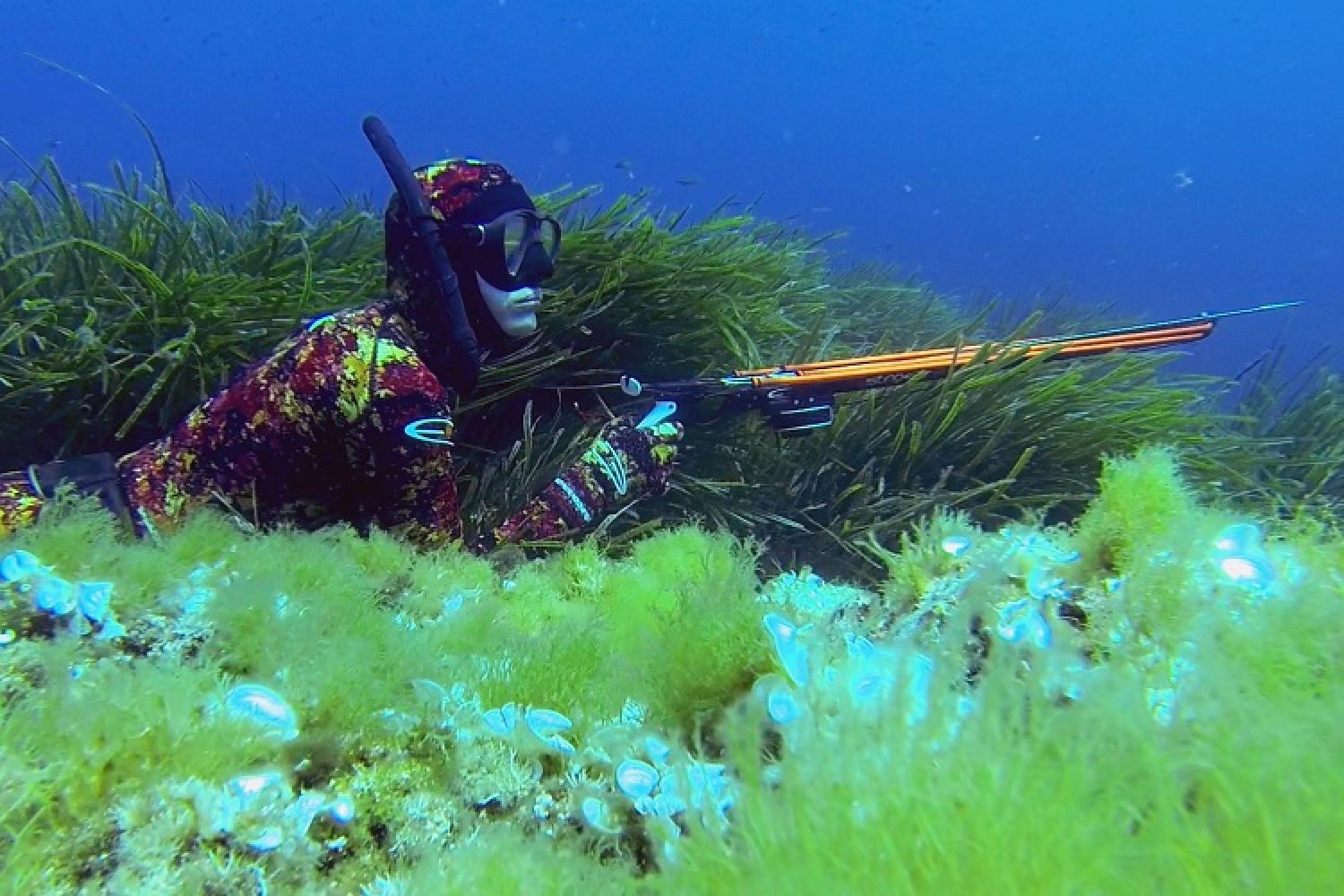Boat fishing, shore fishing and underwater fishing
 Before you leave
Before you leave
- Before setting out, plan your visit.
- For boat fishing, plan your route, by consulting the SHOM map (map administered by France's Ministry of Defence, compulsory on board) and the various resources available in the media library, in particular the map of sea regulations.
- If you are sailing a rented boat, view this page.
 Best practices
Best practices
- Fish a variety of species, rather than targeting a single species.
- Take care not to catch sensitive and vulnerable species.
- Avoid taking species during the spawning period.
- Keep your sea and coastline clean: take your rubbish with you and recycle it.
- Do not throw food in the sea.
- Keep your distance from cetaceans and do not follow them: if they change speed or direction abruptly, it means that they do not want to be approached.
- When boat fishing: please slow down when approaching a professional fishing boat setting fishing gear.
- When boat fishing: keep your boat's bilge clean and free of contaminating liquids (oil, petrol, cleaning products) that may inadvertently spill into the sea.
- When boat fishing: choose to anchor in sandy beds (clear areas) using the Donia mobile app, raise your anchor upright or use a buoy rope.
- When shore fishing: do not walk over the lithophyllum corridors to reach your fishing spot.
 Regulations
Regulations
- Do not fish in the no-take zones and the enhanced protection zones.
- When boat or shore fishing: respect the maximum quantities of 7 kilos per person per day, with a limit of 20 kilos per day and per boat for fishermen on board.
- When underwater fishing: respect the maximum number of 12 catches per day.
- Respect the maximum number of catches applicable to certain species: bass, bonitos, scorpion fish, dentex, sea bream, etc.
- Mandatory cutting of the caudal fin for any fish larger than 15 centimetres.
- Release fish that do not meet the minimum catch sizes in the best possible conditions: remove hooks, cut the fishing line.
- Do not fish forbidden species: goldblotch grouper, dusky grouper, brown meagre, bluefin tuna, Mediterranean slipper lobster, noble pen shell, etc.
- Do not fish octopus between 1 June and 30 September (bylaws 2017, 2018, 2019, 2020, 2021).
- Do not fish sea urchins between 16 April and 31 October.
- Do not use electric or hydraulic assistance mechanisms.
 Safety
Safety
- When underwater fishing: warn of your presence with a buoy!
- Respect the wildlife: do not disturb or feed it.
- When boat fishing: ensure you follow the safety instructions applicable to boating.
 Contacts
Contacts
Sea rescue CROSS MED: VHF channel 16 - Tel.: +33 (0)4 94 61 16 16 ou 196 depuis un téléphone mobile
Habour masters: VHF channel 9
- Vieux-Port Marseille harbour master: +33 (0)4 91 99 75 60
- Frioul harbour master: +33 (0)4 91 59 01 82
- Pointe rouge harbour master: +33 (0)4 91 99 75 67
- Port-Miou harbour master: +33 (0)4 42 01 96 24
- Cassis harbour master: +33 (0)4 42 32 91 65
- Nouveau port La Ciotat harbour master: +33 (0)4 42 08 62 90
- Port-vieux La Ciotat SEMIDEP harbour master: +33 (0)4 42 83 80 27
Launching:
- La Ciotat
- Centre d'activités nautiques de la Pointe Rouge (Nautical activity centre) in Marseille
Marine weather forecast: VHF channel 80 or 3250
Prohibition in no-take zones
10% of the marine territory of the Calanques National Park is classified as no-take zones (ZNPs). In the seven delimited no-take zones, any kind of fishing is permanently prohibited, whether for professional or leisure fishing.
Against illegal fishing and for reasonable recreational fishing
Illegal fishing undermines the sustainability of traditional professional and recreational fishing practices, which are part of the area's identity. It is also detrimental to the conservation of the Calanques' marine environments, which the National Park is responsible for preserving. Since its creation, the Park has therefore been pursuing the objective of combating this practice by implementing various tools, working alongside French State services.
Signature of a prefectoral decree
On the proposal of the National Park's management board and in addition to the various existing regulations, a prefectoral decree was signed on 31 January 2017 with the aim of reinforcing the fight against illegal fishing and promoting reasonable recreational fishing in the Calanques National Park. It defines a new regulatory framework that applies to all forms of recreational fishing: on boats, from the shore or underwater. These new regulations are the result of a partnership between the Calanques National Park, representatives of recreational fishing (federations, clubs and nautical societies) and socio-professional organisations (regional committee of maritime fisheries and marine husbandry, prud'homies).
Regulations
The regulations set the maximum limit, in weight or number, above which recreational fishing can no longer be considered as being for the exclusive consumption of the fisherman and his family. They also prohibit the underwater hunting of certain sensitive species. They do not replace the other regulations in force under ordinary law and specific to the National Park. Please note: from the moment a person chooses to fish in the core areas of the National Park, the core area rules (maximum quantities, prohibition of underwater fishing of certain species) are applicable to all the catches that he or she has with him or her, regardless of where they were caught (inside or outside the National Park).
Online resources (in French)
Guide for recreational fishing
Species covered by the prefectoral decree, fishing quotas and ZNPs
The regulations in 18 questions and answers
Prefectoral decree of 15 November 2018 concerning recreational fishing
Leaflet on the main nautical regulations









 Video
Video Links
Links
